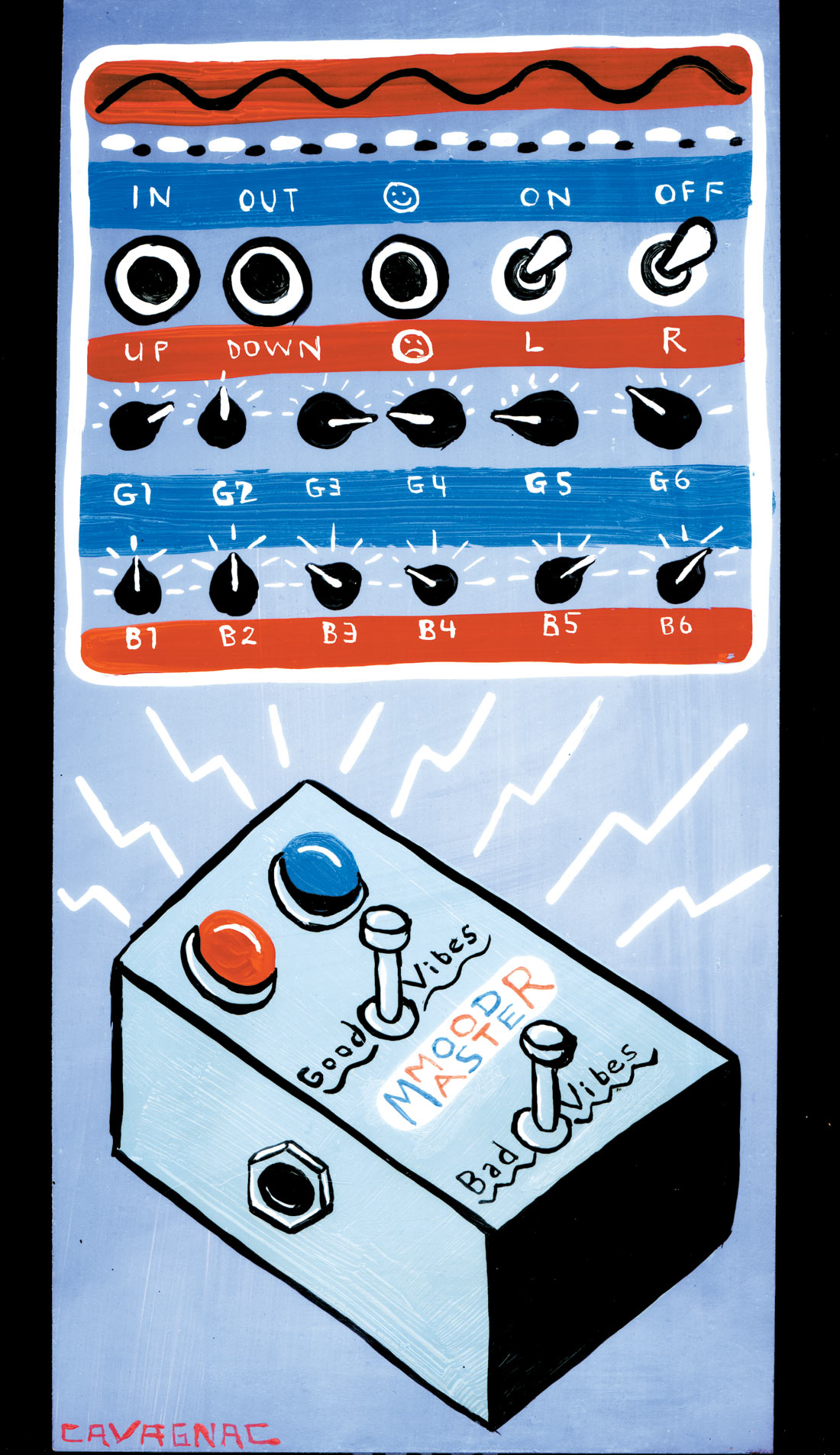I've been searching for the perfect headphone amplification system for tracking live bands in the studio for years. Realizing that sending a single mix out to more than one musician would not do, I began using the aux outs on my console to send several different mixes, but even then, bassists couldn't understand why drummers got their own mix and they had to share with the guitarists. Next, I bought an Oz Audio Q-Mix, an affordable unit (now sold by Mackie as the HMX-56) that allowed me to send one stereo and four mono tracks that the band could mix themselves for six different headphone feeds. Not a bad solution, though it always seemed I could use more inputs, and the drummer always seemed to be the one left with the task of mixing the 'phones for the other players. I'd seen several systems with remote mixers for each musician, but many of them (like the Furman HR/HDS-6 which AH reviewed in Tape Op #38) didn't offer many more channels of input than the Oz; I didn't see much point in spending the money unless I got more inputs. Finally, I stumbled across the HDS/HRM-16 system from Furman. It seemed someone had taken every request of mine and added a few ideas.
First, there's the HDS-16 distribution amp, which powers up to eight HRM-16s (which have two headphone jacks each). They are all connected via Centronics 50-pin connectors (like old parallel printer cables), and these carry the analog signals and power for the units. They can run from the six outs on the back of the HDS or daisy- chain around the room. The HDS brain has inputs for eight mono and four stereo signals via TT or 1/4'' jacks on the front. There's also a talkback input, feed from the HRM talkbacks (more later) and a Solo switch and jack (more later). It's nice they provided both input styles, though having them also available on the rear in case the unit was racked up would have been be nice. Otherwise you'll be running cables around the front. [Perfect if you mount the unit in proximity to your TT or 1/4'' patchbay! Saves on wiring and patchpoints. -AH]
The HRM units have eight level, pan, and effects send knobs for the mono signals; four stereo level pots; an effects return; high and low EQ controls for the headphone mix; a master volume; and a talkback button and level. The talkback button allows the user to press it and communicate with the other musicians through a built-in mic, or if desired (and switched internally in the HDS) only to the HDS output through the aforementioned jack. This feature is cool as shit; musicians can talk to bandmates in iso rooms, to the engineer, and to each other in a room when headphones are on. Works great in practice too- once they get used to pressing the button! There's even a jack to put a remote switch on this if needed. The HRM is easy to set up-plenty of room for 1'' masking-tape labels-and musicians seem to grasp the usage fast. The only feature I never use and find people messing with unnecessarily is the effects send/return feature. You could drag a reverb unit into the live room and set this up for finicky singers that need reverb, but I've always set that up from the control room-seems easier to me. The EQ helps pump more lows or brighten up ribbon driver headphones like the Fostex T-series. I see people adding a bit of lows occasionally. The amps in these units seem pretty powerful; I think the only breakup I hear is the headphone drivers buckling under the voltage or (rarely) someone will push the track levels hard and turn down the main volume too low. I haven't blown a set of 'phones on these yet, which means people are getting the mixes they want and not cranking as hard. The HRM units come with a 25 ft cable and a clip to mount them on mic stands, and I plan to do this soon to keep them from getting kicked around; in fact, one took a 4 ft spill onto cement but survived okay.
Earlier, I mentioned the Solo feature. When this button is engaged, all the other inputs to the HRM units are disabled except the last stereo pairs. This allows you to play a mix back after tracking with things in balance, or to do on-the-fly overdubs in the middle of a tracking session using a different mix than the musicians'. A great idea and feature.
The HDS/HRM-16 is exactly what I have been looking for and worth every penny I spent on it. Musicians have an easier time tracking, performances are better, and my job is easier. (HDS-16 $699 MSRP, HRM-16 $599 each; www.furmansound.com)




_disp_horizontal_bw.jpg)